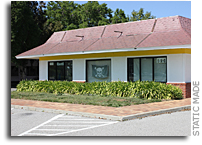Editor’s note: “Desert Moon”, by Jason Davis, premieres June 28, 2014 at the Flandrau Science Center and Planetarium in Tucson. The “Earthrise” imagery retrieved by the LOIRP is featured in the final film. We hope to have a link to an online version at some point soon.
Trailer Note:
In 1961, President John F. Kennedy boldly declared that Americans would walk on the moon before the end of the decade. But at the time, scientists weren’t even sure whether the moon’s surface was solid, or just a thick layer of dust.
At the University of Arizona, an astronomer named Gerard Kuiper established one of the world’s first laboratories dedicated solely to lunar and planetary science. His team built telescopes in the mountains above Tucson to create detailed photographic maps of the lunar surface that would help NASA land a man on the moon. Kuiper also became the principal scientist for the Ranger program, an effort to send America’s first spacecraft to the moon. Ranger spacecraft intentionally crash-landed on the lunar surface, sending back high-resolution photos during their approach.
Desert Moon follows the origins of the University of Arizona’s Lunar and Planetary Laboratory, and follows the effort to map and understand the moon prior to Neil Armstrong’s famous first step in 1969.
The documentary film features interviews with scientists who worked with Kuiper and helped kick-start the field of planetary science. Desert Moon debuts at Tucson’s Flandrau Science Center in Spring 2014.
Scott Manley Visits The Lunar Orbiter Image Recovery Project
McMoons, LOIRP, and ISEE-3 Make Front Page of the New York Times
 Calling Back a Zombie Ship From the Graveyard of Space, New York Times (front page story)
Calling Back a Zombie Ship From the Graveyard of Space, New York Times (front page story)
“For 17 years, [ISEE-3] has been drifting on a lonely course through space. Launched during the disco era and shuttered by NASA in 1997, the spacecraft is now returning to the civilization that abandoned it. It seemed destined to pass without fanfare, except for a slight chance of slamming into the moon, and then loop aimlessly through the inner solar system. But now, a shoestring group of civilians headquartered in a decommissioned McDonald’s have reached out and made contact with it — a long-distance handshake that was the first step toward snaring it back into Earth’s orbit. … Mr. Wingo and Keith Cowing, the editor of NASA Watch, a sometimes cantankerous website covering news and gossip about the space agency, had previously collaborated on a project that resurrected equipment to read 50-year-old magnetic tapes, extracting high-resolution images taken by NASA lunar orbiters in the 1960s — a task NASA had also regarded as infeasible. Mr. Wingo and Mr. Cowing decided ISEE-3 was another worthy effort.”
Carnegie Museum of Art LOIRP Documentary Premiere
.jpg)
2-Minute Film Festival, Carnegie Museum of Art
Join us under the stars as we reveal this year’s finalists-and give you the chance to vote for your favorite! Each year we pick a unique theme and ask filmmakers to submit their finest–and shortest–films to our 2-Minute Film Festival. To celebrate the interstellar premiere of Extraterrestrial: The Lunar Orbiter Image Recovery Project, part of the Hillman Photography Initiative’s Invisible Photograph documentary series, this year’s filmmakers explored the concept of outer space. With so much room for interpretation, we received a wide array of stellar entries from across the country and around the globe, and we can’t wait to share them with you!
Note: LOIRP Co-lead Keith Cowing will be a guest of the Carnegie Museum of Art as this film featuring the Lunar Orbiter Image Recovery Project is shown in public on 10 July 2014 for the first time.
Visiting McMoons and the Lunar Orbiter Image Recovery Project
 A Week With Techno-Archeologists, Static Made
A Week With Techno-Archeologists, Static Made
“I’ve spent the past week in Mountain View, California, hanging out with a group of Lunar Orbiter Image Recovery Project (LOIRP) hackers who are working out of an abandoned McDonald’s on the NASA Ames base. For more than five years, LOIRP technologists (or techno-archeologists, as they prefer to be called) have been reverse-engineering analog tape drives and developing new software in an attempt to unearth some of the first images of the moon that were taken by unmanned lunar orbiters in advance of the manned Apollo missions of the late 1960s. Upon entering the building (affectionately called “McMoon’s” by those who work within it) for the first time, I was greeted by familiar architecture. The drive-thru windows, menu light boxes, stainless steel counters, fiber glass tables and the ghosts of corporate brand ephemera all remain. However now they coexist under a jolly roger with a literal mountain of vintage 2-inch tape reels that contain trapped data, refrigerator-sized Ampex tape drives, an army of Mac workstations and a seemingly endless supply of analog tape decks, monitors, cables and soldering supplies.”
Images from the Carnegie Museum of Art team’s visit to McMoons last week on Flickr
